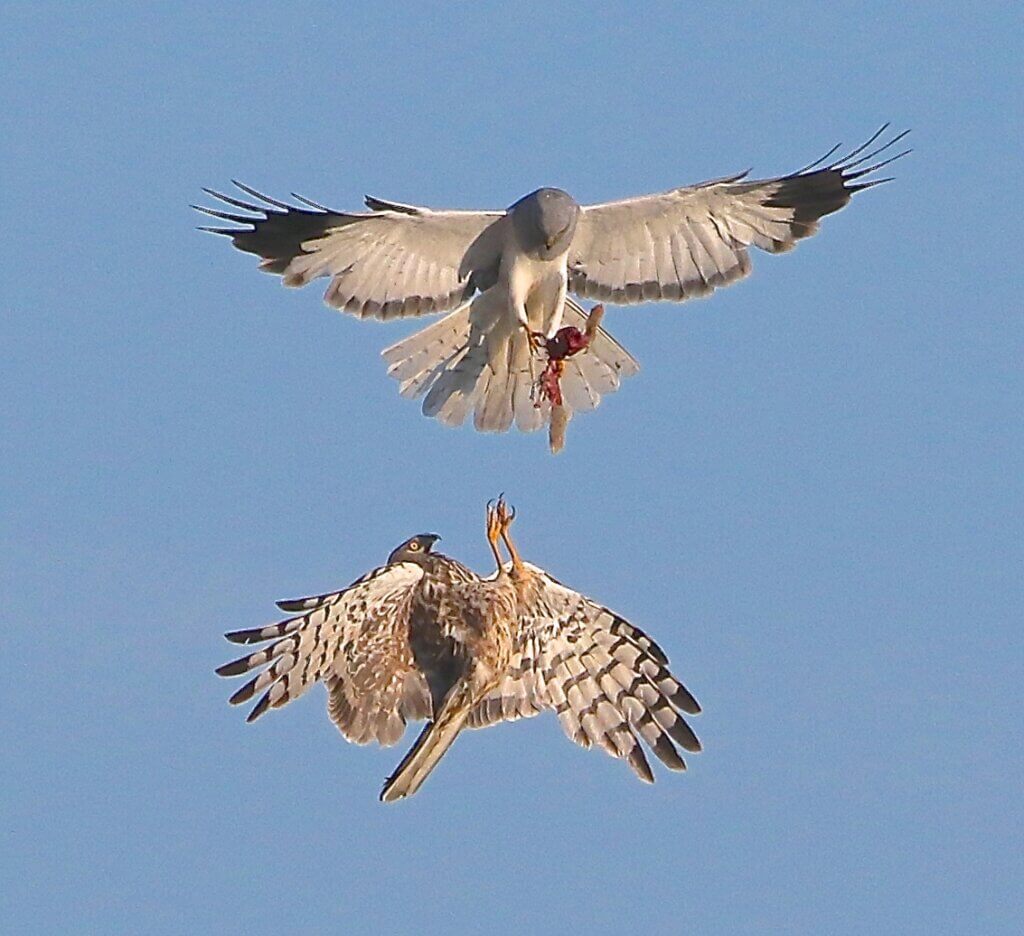
In late June the Moorland Association jumped the gun and said there were 12 Hen Harrier nests on grouse moors in England this year. They also said that this equalled the number in the whole of England last year (not true according to Natural England). And they said that 6 of these nests were in Lancashire, 4 in Cumbria and 2 in Yorkshire.
In July Natural England said that there were more than 20 successful Hen Harrier nests in England.
Today Natural England said that there were 19 Hen Harrier nests in England this year which were in Lancashire, Cumbria, Northumberland and the Yorkshire Dales. Nineteen is clearly a different, and smaller, number than ‘more than 20’ so Natural England is contradicting itself. Natural England has also told us, that there were two nests in North Yorkshire this year (one of which was brood-meddled) and 3 nests in the Yorkshire Dales (one of which was brood-meddled); the broodmeddled nests must have been on grouse moors and the neighbouring nests are very likely to have been too. I have no idea why Natural England used the term Yorkshire Dales rather than Yorkshire but the two are not remotely the same as quite a large chunk of the Yorkshire Dales are in Cumbria. And I strongly suspect that some of the Yorkshire Dales’ nests were in Cumbria.
Today the RSPB said that there were 24 Hen Harrier nests in England and 19 of them were successful.
What to believe? Here are three rules of thumb that I use on Hen Harrier pronouncements:
- what the Moorland Association say: I don’t believe it, they have a tenuous grasp of the facts and a track record of error
- what Natural England says: I don’t believe it all, they have a track-record of incompetence with facts and data and so I try to check everything
- RSPB: I believe them, and if they make a mistake I will regard it as an honest mistake (we all make those)
I would prefer the term “Breeding attempts”, taken as meaning eggs were laid, a nest in itself is not necessarily an indication of breeding.
This should be further qualified as to how many were repeats, i have seen studies before,where
at first glance more birds (not harriers) seemed to exist than was actually the case, thereby
misleading people.
Trapit – I agree. This stuff isn’t very difficult and should come as second nature to anyone who knows anything about wildlife.
My only disagreement is that if a pair of harriers are present at nest building it is a breeding attempt. In the past many pairs were done away with at this stage, we often lost pairs once they started nest building and it wasn’t because they willingly moved on. Otherwise nesting attempt is the right thing to use, often in relatively small populations because of behavioural or plumage characteristics you can track a second attempt if the first fails or indeed males with more than one female.
I’ve just been reading an old Birdwatch – in which there were concerns (that’s you Mark !) about how slowly Bittern were increasing – just one pair in Somerset. And the announcement of Hen Harrier breeding success – guess how many ? Yes, you got it – 19 ! So here we are 15 years on in exactly the same place, albeit having nearly wiped them out in the meantime.
Roderick – really! I’d love to see that.
I find it surprising that natural predation is rarely mentioned as all ground nesting birds are vulnerable to predation by foxes , badgers, crows, ravens, stoats and other birds of prey, I once new of a chap who flew Peregrines at grouse on English and Scottish moors, and he said he was always careful to avoid Hen Harriers when out on the hill as his Peregrine would always kill the Harrier before anything else, I can only think that this also happens in the wild as birds of prey are notoriously hostile to rivals, I believe that only Harris Hawks will hunt communally, and also paired birds of prey, just a thought .